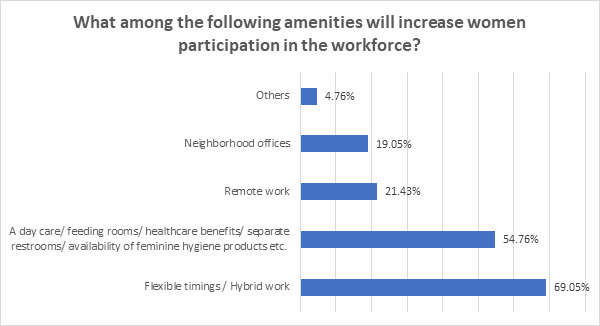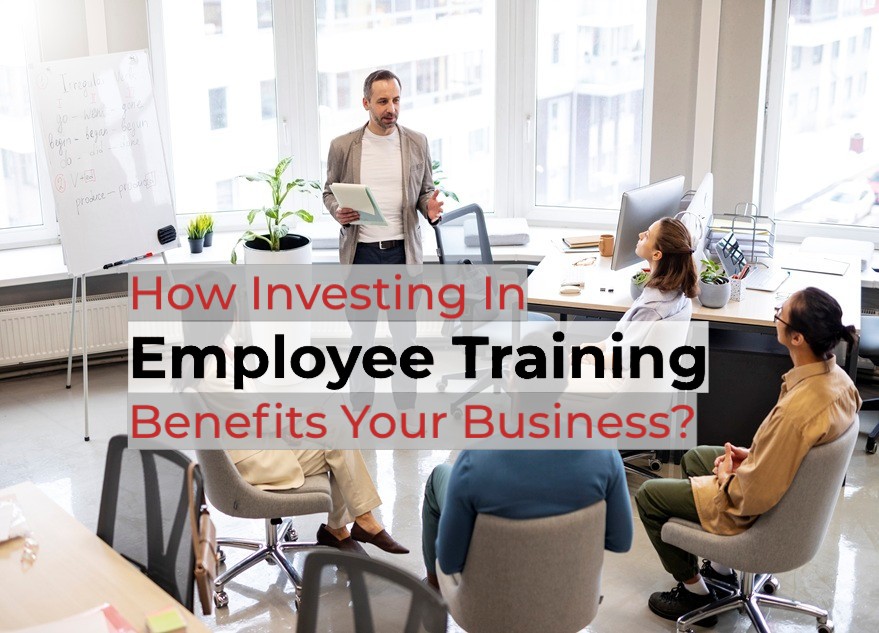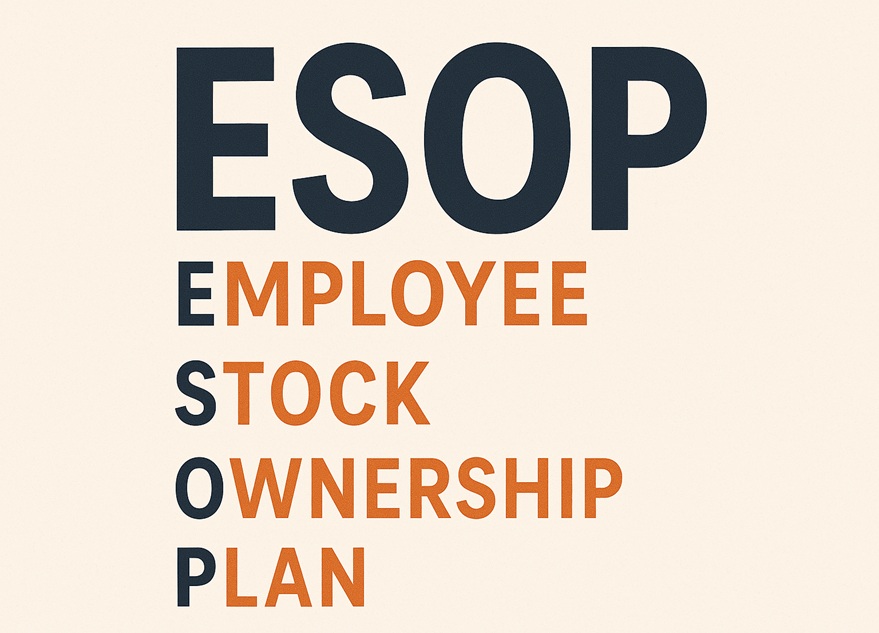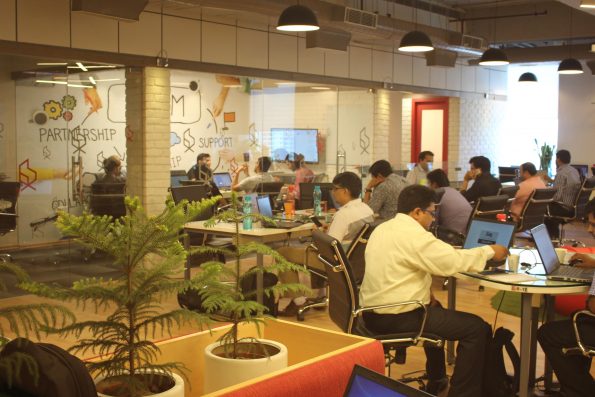Women Participation at Workplace Survey 2024 by The Office Pass (TOP)
- Women’s participation at work has increased after the COVID-19 pandemic.
- Greater flexibility and conducive policy changes can help companies develop inclusive workplaces, resulting in an increased number of women employees.
- Neighbourhood office locations and remote working are preferred by women workers.
Flexibility to work in a hybrid mode, provision of amenities related to daily needs, presence in a neighbourhood location, regular training and mentorship, opportunity to grow and an equal pay model make a workplace an inclusive one, according to The Office Pass (TOP) survey on Women’s Participation in Workplace in 2024.
The goal of the survey, is not only to identify existing challenges but also to propose actionable strategies that will encourage greater women participation and cultivate a positive work culture.
The survey involved 500+ corporate participants ranging from mid-level to senior-level executives and C-suite women leaders in various fields. Women accounted for 88% of the survey participants.

Many companies have prioritized creating a supportive work environment, particularly for women, by implementing policy changes. It has resulted in an increase in the number of female employees and a more favorable workplace atmosphere.
The survey discovered that there has been a surge in women’s participation in the workforce after the COVID-19 pandemic. While 57% of the respondents confirmed a rise in women participation, 38% of respondents say the percentage of women has remained the same.
The survey also asked for the top initiatives that would help attract more women to the workplace. Offering flexible schedules and hybrid work came as the top initiative opted by 69% of the respondents. In contrast, approximately 55 percent of respondents believe that providing ample amenities (daycare, feeding room, healthcare benefits etc.) within the workplace would encourage women’s participation. 19% respondents preferred neighbourhood offices.

Commenting on the findings of the survey Aditya Verma, Founder and CEO, The Office Pass (TOP) said, “Active women participation in the workplace is critical for the success of any organisation. Little work has been done in this direction. The survey conducted by TOP brings to the surface actionable intelligence that can guide organisations in this direction. We hope people will take note of the findings and take appropriate steps to boost women’s participation in the workplace”.
Organizations that have adopted a hybrid or fully remote operating model have achieved success in terms of organisational health and operational efficiency. Women are often found to be multitaskers. They continue to juggle between households and income generation for the family. Many have opted to be gig workers or entrepreneurs.
Policy changes that would have a positive impact on increased participation by women were also discussed as part of the survey. Professional development & career enhancement were preferred by 62% of respondents followed closely by equal opportunity and pay parity (47%). Skill development initiatives came third with 43% of respondents opting for it.

When asked whether they believe there are equal opportunities for career growth and advancement for both men and women in your organization, 86% of the respondents answered in a resounding YES. This is in sharp contract to the popular perception among the wider segment of the society. Only 10% respondents said NO and 4% were un-decided.
Important conclusions from The Office Pass (TOP) survey: To enhance women’s participation in the workplace, we propose a multifaceted approach. This includes implementing mentorship programs, creating a supportive network, and providing skill development opportunities tailored to the unique needs of women employees. Additionally, revisiting and revising policies related to flexible work arrangements, parental leave, and childcare facilities will further contribute to a more inclusive environment. By actively involving women in decision-making processes and leadership roles, we aim to break down barriers and inspire the next generation of female leaders.
Let us embrace this opportunity to lead by example and create an inclusive workplace that empowers and uplifts all its members.









